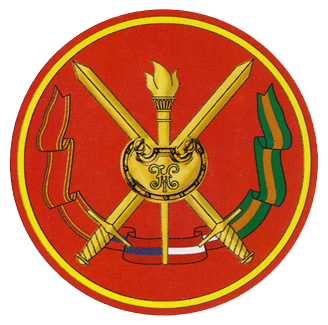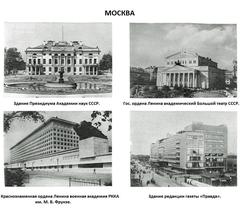
Visiting the M.V. Frunze Military Academy, Moscow: A Comprehensive Guide
Date: 14/06/2025
Introduction
The M.V. Frunze Military Academy is a cornerstone of Russian and Soviet military history, renowned for shaping generations of military leaders and developing doctrines that influenced not only the USSR but also allied nations. Established in 1918 amid the Russian Civil War and named after Bolshevik commander Mikhail Vasilyevich Frunze in 1925, the academy’s imposing architecture and storied past make it a fascinating point of interest for military history enthusiasts, architecture buffs, and culturally curious travelers. While access to its interior is highly restricted due to its status as an active military institution, the site’s exterior, nearby attractions, and rich legacy make it a noteworthy stop in Moscow’s historical landscape (wikispooks.com; wikiwand.com).
Table of Contents
- Historical Overview
- Architectural Highlights
- Visitor Information: Hours, Tickets, and Access
- Nearby Attractions and Travel Tips
- Cultural Etiquette and Visiting Protocols
- Practical Visitor Recommendations
- Frequently Asked Questions (FAQs)
- Conclusion
- References and External Links
1. Historical Overview
Founding and Early Years (1918–1925)
The academy began as the General Staff Academy of the Red Army, responding to the urgent need for well-trained officers during the Russian Civil War. Drawing on the legacy of the Imperial Nicholas Military Academy, the institution initially focused on operational tactics, military science, and ideological training to foster a loyal Bolshevik officer corps (wikispooks.com).
Naming and the Frunze Legacy
In 1925, the academy was named after Mikhail Vasilyevich Frunze, a prominent Red Army commander and military theorist. The curriculum expanded to include broader military sciences, logistics, and political education, cementing the academy’s reputation as the Soviet Union’s premier training ground for senior command officers.
World War II and Postwar Era
During World War II, the academy accelerated its programs and relocated temporarily to ensure continuity of officer training. Many graduates played key roles in Soviet military operations, and the institution’s doctrinal innovations shaped postwar Soviet military thought.
After the war, the academy’s prestige grew. It became essential for officers aspiring to higher command, offering rigorous multi-year courses and producing hundreds of Heroes of the Soviet Union (wikispooks.com).
International Influence and Transition
The Frunze Academy trained officers from allied socialist countries, spreading Soviet military doctrine globally. After the USSR’s dissolution, it was merged into the Combined Arms Academy of the Armed Forces of the Russian Federation in 1998, maintaining its educational traditions within a modern framework (everything.explained.today).
2. Architectural Highlights
The academy’s main building, constructed in 1934 and located on Devichye Pole (Maiden Field) in central Moscow, exemplifies Soviet monumentalism with neoclassical and Stalinist elements. Its ten-story façade is flanked by iconic marble tanks, symbolizing its armored warfare focus (cia.gov). The symmetrical columns, grand portico, and military insignia reflect the Soviet emphasis on state power and discipline (moscowarchitecture.tulane.edu).
Internally, the academy features spacious corridors and ceremonial halls, though these are not open to the public. The building is set amidst the Khamovniki District, near important academic and medical institutions.
3. Visitor Information: Hours, Tickets, and Access
Visiting Hours and Access
- Interior Access: The M.V. Frunze Military Academy is not open to the general public. Access to the grounds or interior is restricted to military personnel, students, and authorized visitors with official invitations (eng.army.mil.ru).
- Exterior Viewing: The building’s exterior and symbolic features can be appreciated from public streets. There is no ticket required to view or photograph the exterior from outside.
- Special Events: Occasionally, exhibitions or commemorative events may be hosted, usually by invitation or arrangement through official channels.
Location and Directions
- Address: Devichye Pole Passage 4, Khamovniki District, Moscow
- Transport: Easily accessible via Frunzenskaya and Sportivnaya metro stations (Red Line). Numerous buses and trolleybuses serve the area (Moscow Metro Map).
4. Nearby Attractions and Travel Tips
- Novodevichy Convent: UNESCO World Heritage Site within walking distance.
- Gorky Park: Popular urban park along the Moscow River.
- Luzhniki Stadium: Major sports and events complex across the river.
- Smolensk Market: Local shopping and dining options.
Travel Tips:
- Visit during daylight for optimal views of the architecture.
- Combine your trip with walks along the river or exploration of neighboring historical sites.
- Photography of the exterior is permitted, but avoid capturing military personnel or sensitive areas.
5. Cultural Etiquette and Visiting Protocols
- Dress Code: Smart casual attire; avoid shorts or clothing with political slogans.
- Behavior: Maintain decorum; address staff or military personnel formally.
- Language: Russian is the primary language. English signage is limited; consider a translation app or Russian-speaking companion.
- Security: Carry identification; adhere to posted guidelines and do not attempt unauthorized entry.
6. Practical Visitor Recommendations
- Advance Planning: For any potential access beyond the exterior, contact the Combined Arms Academy or Ministry of Defence well in advance, with clear documentation of your affiliation and purpose.
- Guided Walks: Some local tour operators include the academy in architectural walking tours of the Khamovniki District.
- Accessibility: The surrounding district is pedestrian-friendly with good public transport links. There are no public restrooms or cafes on-site, so plan accordingly.
- Safety: Follow security instructions and avoid crowded or restricted areas.
7. Frequently Asked Questions (FAQs)
Q: Can I visit the interior of the M.V. Frunze Military Academy?
A: No, the academy’s interior is not open to the public; only authorized personnel and invited delegations may enter.
Q: Is there a ticket fee for viewing the exterior?
A: No, the exterior can be viewed free of charge from public streets.
Q: Are guided tours available?
A: The academy itself does not offer public tours, but some Moscow historical walking tours may include it as a point of interest.
Q: What is the best way to get there?
A: Use the Frunzenskaya or Sportivnaya metro stations; both are within short walking distance.
Q: Are there other military landmarks nearby?
A: Yes, Novodevichy Convent, Gorky Park, and several military history museums are nearby.
8. Conclusion
The M.V. Frunze Military Academy is a landmark of military tradition, education, and monumental architecture in Moscow. While its interior remains closed to the public, its imposing façade and historical significance make it an essential stop for anyone interested in Russian military heritage. Combine your visit with nearby attractions for a broader understanding of Moscow’s history.
For up-to-date information, guided tours, and event announcements, download the Audiala app or consult Moscow’s official tourism resources. Respect cultural norms, prepare accordingly, and enjoy exploring one of Moscow’s most storied military sites.
9. References and External Links
- Frunze Military Academy – Wikispooks
- Frunze Military Academy – Wikiwand
- Frunze Military Academy – Everything Explained Today
- Moscow Architecture Project – Frunze Military Academy
- CIA Document on Soviet Military Academies
- Combined Arms Academy
- Architectuul – Frunze Military Academy
- Liquisearch – M.V. Frunze Military Academy
- Moscow Tourism Official Site





















































































































































































































































































